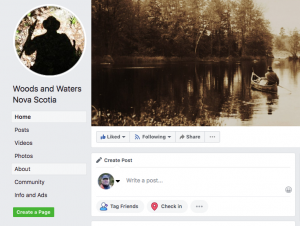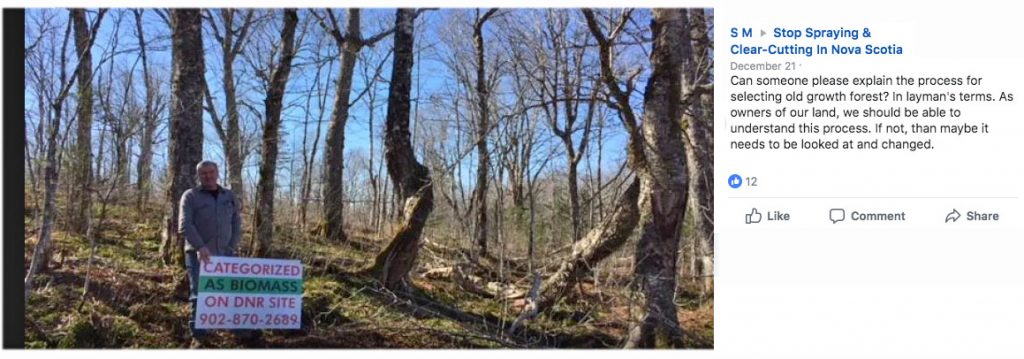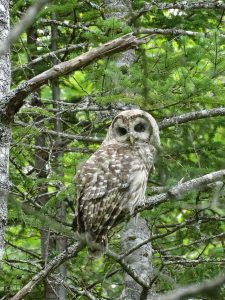This section was posted on Dec 30, 2018
Development and Updates ongoing
| What is Old Growth – Subsections – Old Forest Layer – Development Class Layer – The Polygon Problem – OG Indicators and subsections Lynds & Leduc ’95, GFE Guidelines, Nova Scotia Old Growth Ground Zero/C-D Peninsula Maps – Lit & Links and subsections Lichens, Birds, Species dependent on OG Also see: – Consultations/Old Growth Responses to proposed Old Growth Forest Policy (fall 2021); e.g. Comment 2 on the draft Nova Scotia Old Growth Forest Policy: on the significance of historic blowdowns and Pit and Mound topography 5Dec2021 |
Introduction
The question of What’s considered Old Growth in Nova Scotia? was posed by SM On Stop Spraying & Clear-Cutting In Nova Scotia on Dec 21, 2019 as follows:
Can someone please explain the process for selecting old growth forest? In layman’s terms. As owners of our land, we should be able to understand this process. If not, than maybe it needs to be looked at and changed.
It’s a good question, not answered in a few sentences.
How do we know what is Old Growth forest in Nova Scotia when we see it?
How do we know if a particular stand is protected?
Where might we find Old Growth Stands in Nova Scotia?
What is the “Old Forest Policy”
These are some of the questions that I will attempt to address in these pages.
Nova Scotia is one of the few places for which there is an operational definition of Old Growth forest, meaning that there are standard, measurable criteria, and if a stand meets those criteria, it is accepted by NSDNR/L&F as “Old Growth”. View Nova Scotia’s Old Forest Policy (NSDNR, Aug 2012); also other documents listed on NSFN>Natural History>Conservation>NSDNR Old Forest Policy, and this:
Old forest policy and regulatory frameworks in Nova Scotia and New Brunswick with a comparison to British Columbia
Amy Berry, Amanda Lavers and Lisa Mitchell The Forestry Chronicle, 2018, 94(1): 13-19
ABSTRACT: Old growth forests (OGF) represent ecological continuity and are rich in biodiversity. These unique landscapes are becoming increasingly rare in Canada, especially within the Acadian Forest Region that covers the Maritime Provinces. Less than 1% of the total forest cover in these provinces is OGF — this is drastically lower than the 55% represented in British Columbia’s Temperate Coastal Rainforest. The authors of this paper conducted a comprehensive comparative analysis of old forest policies and regulatory frameworks in Nova Scotia, New Brunswick and British Columbia to offer recommendations for improving the conservation and stewardship of OGF in the Maritimes. The analysis revealed that in Nova Scotia there is a strong old forest policy underpinned by a quantitative scoresheet, coordinator, and database. In New Brunswick and Nova Scotia the conservation targets are up to 8% on Crown land, but neither have a regulatory framework nor have evidence of achieving these targets. British Columbia has integrated Forest Stewardship Plans that promote the retention of OGF as legally enforceable tools for licensees in Old Growth Forest Management Areas. Such an approach could prove useful in improving the restoration and conservation of OGF in the Maritime Provinces.
It’s fairly technical process to do the measurements required by the protocols of Nova Scotia’s Old Forest Policy and it requires use of some specialized equipment, notably a wedge prism* and an increment borer (used to determine age of a tree) and some experience/training in using them and in following the overall procedure.
*There are some low-tech alternatives, e.g. as described in Simple Homemade Forestry Tools for Resource Inventories (Washington State Extension publication, 2011); also view Medway Co-op Video
So the OFP (Nova Scotia’s Old Forest Policy) will not readily answer the question How do we know what is Old Growth forest in Nova Scotia when we see it?
There are also some technical issues involved in its application that result in Old Growth stands being missed or not counted.
So this is another part of what I will try to address in these pages.
I will often use forest in the area of Sandy Lake at Bedford, Nova Scotia for examples or illustrations, as I have investigated that area for presence of Old Growth; also some stands in the Five Bridge Lakes Wilderness Area on the Chebucto Peninsula.
I have to acknowledge many people who have helped me to begin to understand Nova Scotia’s old forests, amongst them Nick Hill, Donna Crossland, Bob Guscott, Bob Bancroft, Elena Ponomarenko, Shalan Joudry, Kerr Canning, Peter Neily, Bruce Stewart, Alain Belliveau, Colin Gray… and more. The Provincial Landscape Viewer has been a huge help as well, especially as I lack GIS skills.
____________
A disclaimer: as an Academic, albeit retired, I could be expected to approach these issues very rigorously with peer review etc. and I fully acknowledge that limitation (that I don’t do so) for everything I write on NS Forest Notes. I am writing these materials about Old Growth because there is a dearth of information of this sort for NS in a form that most Nova Scotians can read and make use of and I am concerned about that because of the pressures on our forests and how quickly the harvesters are moving. So I am making a stab at it. I have no formal qualifications in forest ecology or forestry, my graduate degrees being in marine biology.
I have no issue with my materials being challenged. Please do, in public as poss., e.g. on Woods and Waters Nova Scotia, and we can have a constructive back and forth in a quest to sort it all out.
One hope I have is that my posting these materials will prompt academics with much more formal knowledge of NS forests than I to become more involved in the public domain and write and discuss such materials.
 Please comment on NSFN content via WWNS; you can simply reference the content on NSFN in a post on WWNS.
Please comment on NSFN content via WWNS; you can simply reference the content on NSFN in a post on WWNS.


